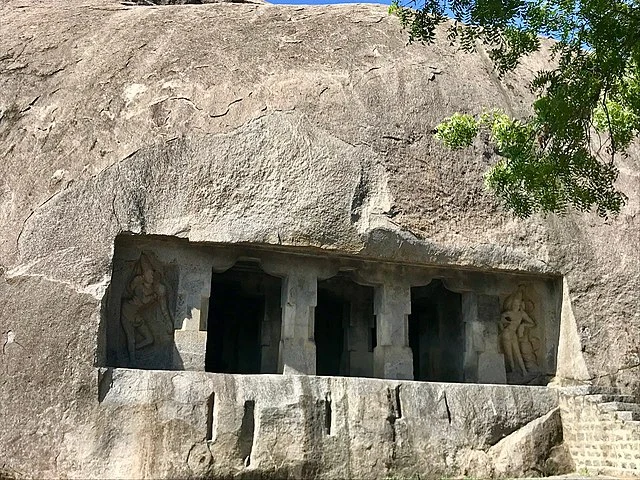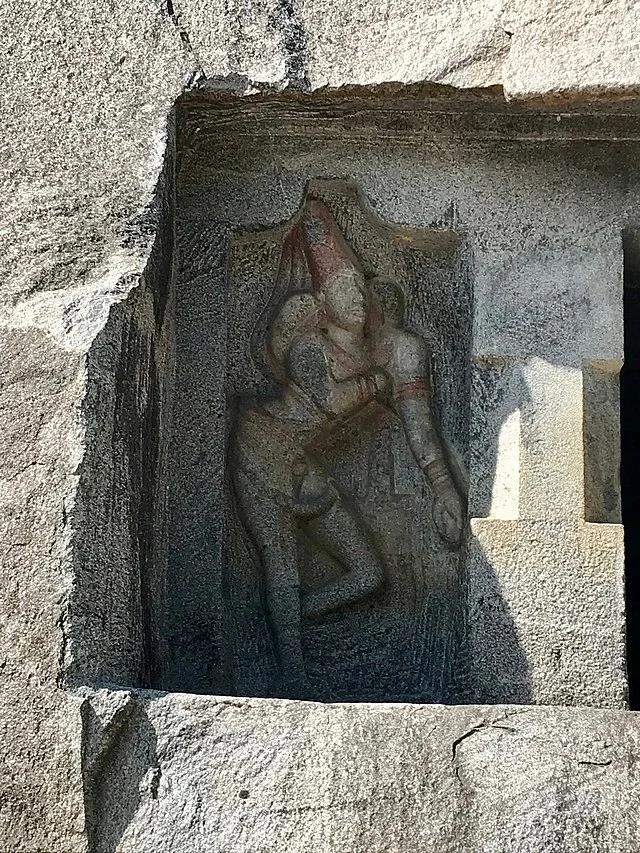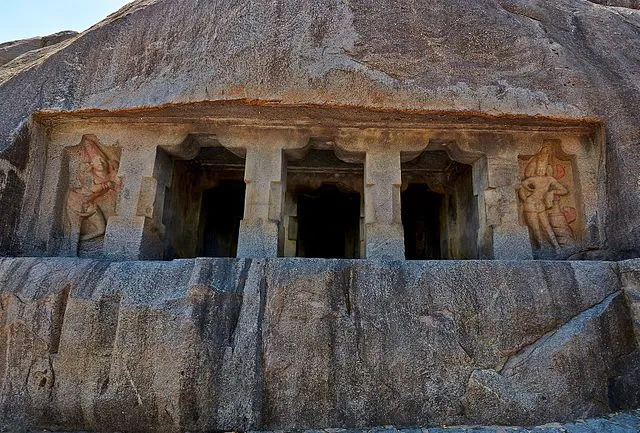The Mandagapattu Tirumurti Temple is a significant historical site in Tamil Nadu, India. It stands as an important example of early rock-cut architecture in the region. Constructed during the Pallava dynasty, this temple is known for its simplicity and religious significance.
Get your dose of History via Email
Historical Background

The Mandagapattu Tirumurti Temple was built during the reign of Mahendravarman I, who ruled from 600 AD to 630 AD. Mahendravarman I was a key figure in South Indian history, known for his contributions to art and architecture. This temple, dedicated to the Hindu trinity—Brahma, Vishnu, and Shiva—reflects the religious and cultural landscape of the Pallava period.
Architectural Significance

This temple is the first rock-cut temple created by the Pallavas, marking a departure from the earlier tradition of constructing temples with bricks and mortar. The temple’s simple design, with a single shrine or garbhagriha, was carved out of a rock face. The absence of mortar, wood, metal, or brick in its construction is notable. An inscription on the temple records this fact, emphasizing the use of only rock.
Religious Importance
The Mandagapattu Tirumurti Temple holds religious significance as it is dedicated to the Trimurti—Brahma, Vishnu, and Shiva. This dedication is symbolic of the temple’s role in promoting the worship of the Hindu trinity during the Pallava period. The temple likely served as a place of worship and religious activities, contributing to the spread of Hinduism in the region.
Inscriptions and Discoveries

Inscriptions found in the temple provide crucial information about its history. The inscriptions, in Pallava Grantha script, mention Mahendravarman I as the builder. These inscriptions also highlight the religious devotion of the king, offering insights into the religious practices of the time. Archaeologists and historians have studied these inscriptions to understand better the socio-political and religious context of the Pallava era.
Conclusion
The Mandagapattu Tirumurti Temple is an essential site in the study of South Indian history and architecture. Its construction during Mahendravarman I’s reign marked the beginning of rock-cut architecture in Tamil Nadu. The temple’s dedication to the Trimurti reflects the religious priorities of the Pallavas, and the inscriptions offer valuable historical insights. As a result, the Mandagapattu Tirumurti Temple remains a key example of early Pallava art and religious expression.
Source:

